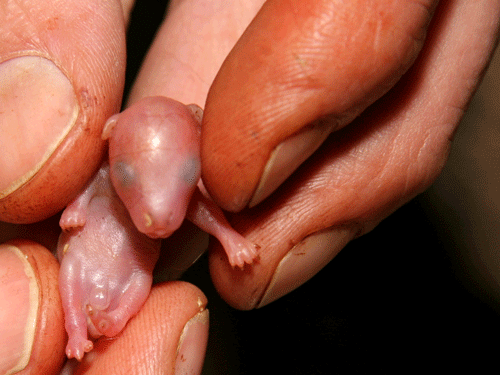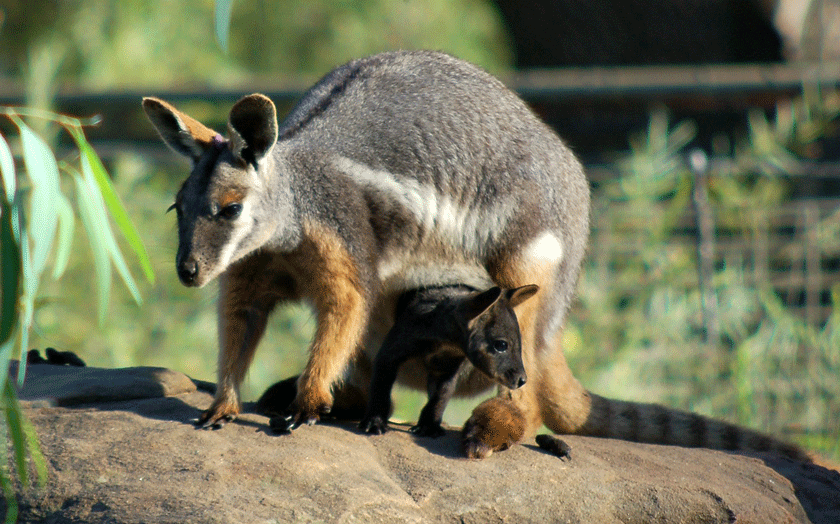New breeding technique addresses extinction rates
With Australia leading the world in mammal extinctions, an innovative breeding technique could bring Australia's threatened kangaroos and wallabies back from the brink.

Developed by Dr David Taggart, marsupial reproduction specialist with the University of Newcastle led Wildlife Biodiversity Co-operative Research Centre (Wildlife Biodiversity CRC) Bid, the technique could deliver a six-fold increase in the breeding rates of some of Australia's most endangered marsupials.
"Fifteen per cent of all wallabies and kangaroos are already extinct or threatened. While large kangaroo species such as the red kangaroo are abundant, some of the smaller species are in serious decline," said Professor John Rodger, Wildlife CRC bid leader, University of Newcastle.
In a world-first for a critically-endangered species, and show cased in the up and coming David Attenborough documentary, 'The rise of mammals' to be aired in Australia in February, Dr Taggart's cross fostering technique involves transferring tiny joeys from the endangered brush-tailed rock wallaby and mainland tammar wallaby into the pouches of other common wallaby species. The technique frees the endangered females from the burden of nursing their young and greatly increases their natural breeding rate, enabling them to give birth again within 30 days.

"Cross-fostering significantly accelerates the breeding of endangered marsupial species and will have a significant impact on conservation of Australian marsupials in the future. With backing of the Wildlife Biodiversity CRC Bid, this and other assisted breeding techniques will be adapted to a wide variety of threatened kangaroos, wallabies, wombats, possums and rat kangaroos," said Dr Taggart.
"Since 1788, Australia has lost 27 mammals, many of them marsupials. This is one world record we do not want to hold," said Professor Rodger.
A Trans-Tasman consortium of 44 partners, The Wildlife CRC Bid aims to establish a $200 million world-leading Cooperative Research Centre for Wildlife Biodiversity with federal funding and in-kind support. Bringing together the best expertise in Australasia, the Wildlife Biodiversity CRC's planned research in gene banking, reproduction and fertility management, applied ecology and disease detection and response are aimed at addressing present biodiversity decline and 'future proofing' Australia's wildlife.
Examples of species targeted by the Wildlife Biodiversity CRC under this program, if successful in their bid includes: the long footed potoroo, northern bettong, gilberts potoroonorthern hairy-nosed wombat, scotts tree kangaroo, mountain pygmy possum, bridel nail-tailed wallaby, banded hair wallaby, proserpine rock wallaby, black-footed rock wallaby, cape york rock wallaby, monjon, pigmy rock wallaby, rufus hare wallaby, lumholtz tree kangaroo, brush-tailed bettong, burrowing bettong, squirrel glider, mahogany glider and lead beaters possum.
Contact
- Sheena Martin
- Phone: +61 2 4921 8714
Related news
- Launch of the School Students’ Statement on the Right to a Healthy Environment
- Funding boost to technology for lower emission steel
- Newcastle team on mission to improve childhood cancer outcomes
- Shanae’s passion for caring delivers her dream to work in health
- Food and nutrition degree serves Keren a rewarding career
The University of Newcastle acknowledges the traditional custodians of the lands within our footprint areas: Awabakal, Darkinjung, Biripai, Worimi, Wonnarua, and Eora Nations. We also pay respect to the wisdom of our Elders past and present.